i respect and applaud the effort
Most of these experiments don't stick around for long, but who knows.
Acer's Nitro Blaze 11, which takes the "portable" out of "portable handheld gaming PC." Credit: Acer
The Consumer Electronics Show is a reliable source of announcements about iterative updates to PCs and PC components. A few of those announcements are significant enough in some way that they break through all that noise—Nvidia's RTX 50-series GPUs and their lofty promises about AI-generated frames did that this year, as did Dell's decision to kill multiple decades-old PC brands and replace them with a bland series of "Pro/Premium/Plus" tiers.
But CES is also a place where PC companies and accessory makers get a little weird, taking some bigger (and occasionally questionable) swings alongside a big batch of more predictable incremental refreshes. As we've covered the show from afar this year, here are some of the more notable things we've seen.
Put an E-Ink screen on it: Asus NUC 14 Pro AI+
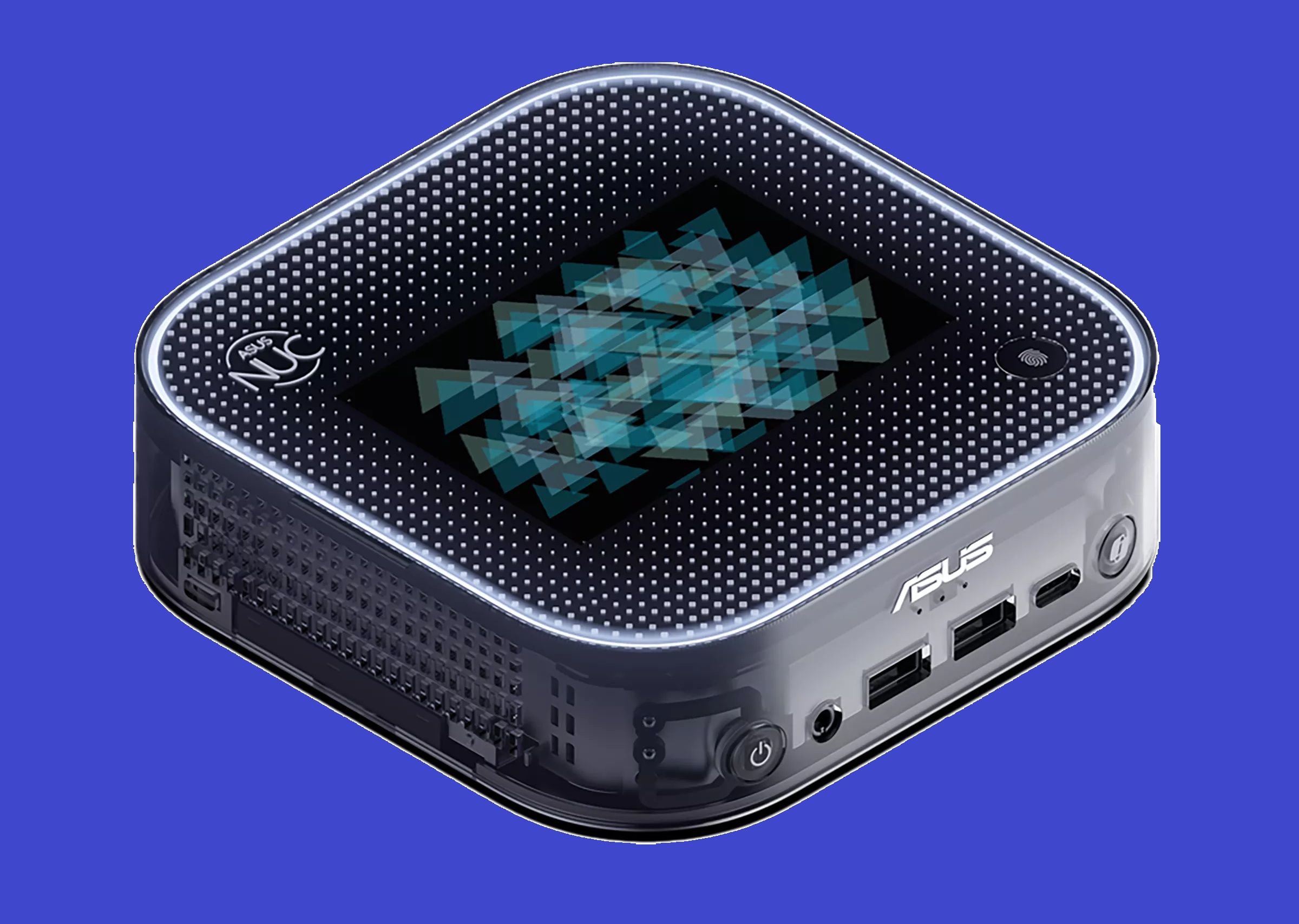
The NUC 14 Pro AI+ finds a way to combine E-Ink, AI, and turn-of-the-millennium translucent plastic into a single device. Credit: Asus
The strangest CES PCs are usually the ones that try to pull away from "a single screen attached to a keyboard" in some way. Sometimes, those PCs have a second screen stashed somewhere; sometimes, they have a screen that stretches; sometimes, they get rid of the keyboard part and extend the screen down where you expect that keyboard to be.
Asus is currently the keeper of Intel's old NUC mini PC line, and this year it's updating the NUCs mostly by putting new processors in them. But the Asus NUC 14 Pro AI+ also decides to spice things up by adding a color E-Ink display on top, one with images that can display persistently even when the device is off.
While other PCs with shoehorned-in E-Ink displays have at least tried to do something functional—older laptops in Lenovo's ThinkBook Plus series could be used as E-Ink tablets when they were closed—the screen on the NUC 14 Pro AI+ seems strictly ornamental. Asus offers few details about how it works: "users can generate AI images through the built-in app, allowing them to create unique personal identification designs that continuously display content without being plugged in, consuming no power."
All of Asus' product shots show the NUC with the same pattern of abstract triangles displayed on the top, so it's unclear whether users will have the option to use custom non-AI-generated images, or if they'll be able to use the screen to display any other kind of system information. It's unique, at least.
Stretching out: Lenovo ThinkBook Plus Gen 6 Rollable

Is this a weird stretched-out Photoshop of a laptop? No, it's just the Lenovo ThinkBook Plus Gen 6 Rollable! Credit: Lenovo
We wrote about the Lenovo ThinkBook Plus Gen 6 Rollable already this week, so we won't dedicate a ton of extra space to it here. But its stretchable screen, which expands vertically from 14 inches to 16.7 inches, is an interesting riff on the "one laptop, multiple screens" idea. Some pictures of the laptop look vaguely Photoshopped, like someone grabbed the top of the screen and stretched it out.
Other laptops have put a second screen beneath the hinge under a removable keyboard and a second screen that folds out horizontally. The new ThinkBook keeps the portrait orientation, but it has a traditional non-removable keyboard in the base. One day, maybe Lenovo will hit a ThinkBook Plus screen idea that it likes well enough to keep for more than a generation or two.
A time for reflection: InWin Prism PC case
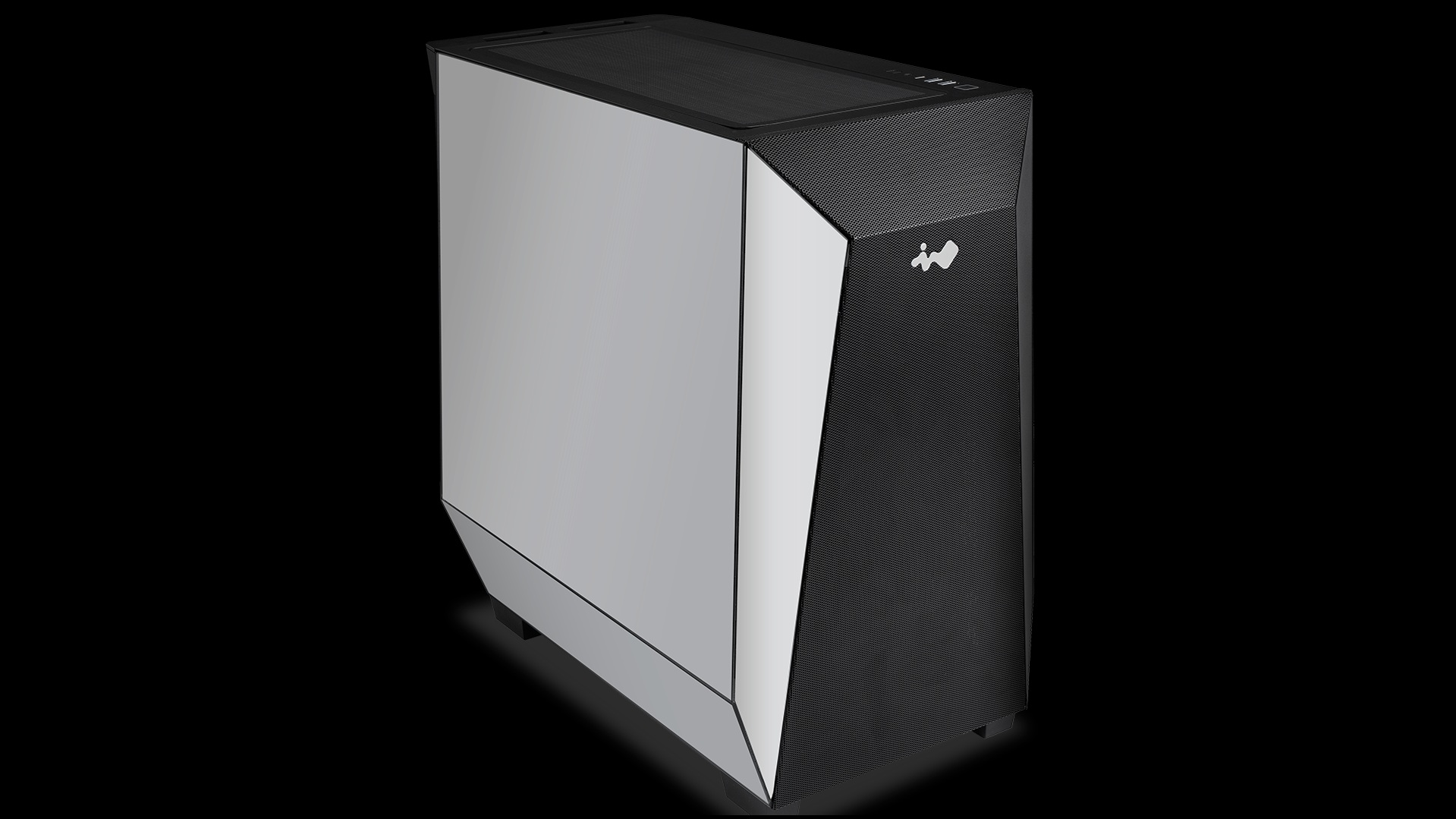
The InWin Prism case has mirrored glass side panels, so you can see everything inside your PC and also everything outside your PC.
Seeing what pre-built weirdness the PC companies can come up with is always fun, but I live for the PC case ideas that companies bring to CES. Maybe you're using weird materials like fabric or wood paneling. Maybe you're making a case that looks like a shark, or a giant shoe. I probably won't buy any of these things, but I sure do like looking at them.
The most eye-catching entry into this genre from CES 2025 is from InWin, which has also given us hits like this case with addressable RGB lights all over its entire front panel. The InWin Prism midtower uses two-way mirror panels on its sides—if you've already got a PC filled with busy RGB lights, the Prism makes things look even busier by also reflecting everything in your room back at you.
The pristine press shots of this one don't really do it justice; photos from Tom's Hardware of the case on the show floor do a better job of conveying just how chaotic this thing looks in person.
Feeling exposed: MSI Project Zero X case
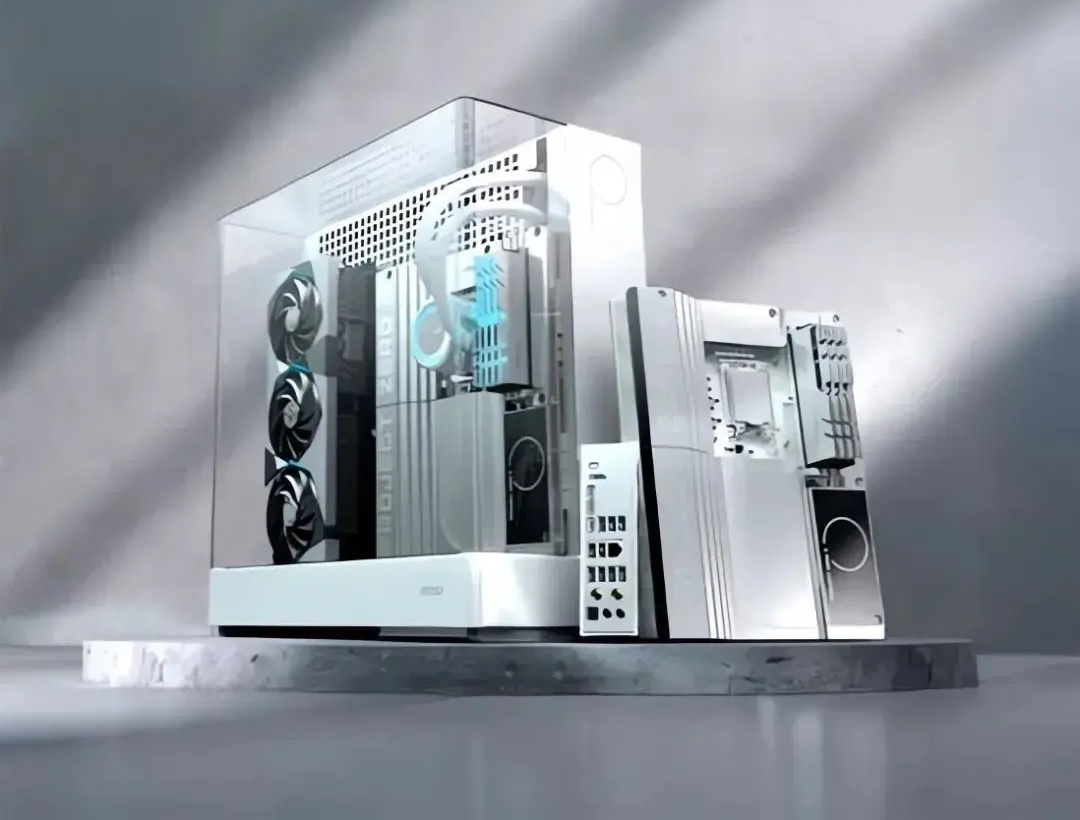
MSI's Project Zero X concept case achieves a clean look by using back-connect motherboards. It's very glassy. Credit: MSI
If the Prism is a PC case that looks a little too visible, MSI's Project Zero X is the opposite, with glass that wraps around the back, front, left side, and top of the case to show off everything inside to an even greater degree than most windowed cases.
This is a follow-up to the original Project Zero concept case, which wasn't quite as glassy. The (relatively) unique thing about both cases is that they're designed around motherboards with all their various connectors on the back side—often referred to as "back-connect" motherboards. The power plugs, fan and USB headers, power button, and everything else you need to plug cables into when you install a motherboard are all facing the opposite direction from your CPU socket, RAM slots, and PCI Express cards.
The point is to make it easier to create clean, show-off-able builds without as much cable management hassle, which is why you'd combine it with a case that shows your motherboard off from every side but the back.
A roommate for your gaming PC: MSI MEG MAESTRO 900L PZ

The MSI MEG MAESTRO 900L PZ can fit a full-size E-ATX build and a mini ITX build into the same case at the same time? Because why not? Credit: MSI
MSI also makes the cut for the MEG MAESTRO 900L PZ. This is a hulking monstrosity of a PC case that can, for some reason, fit an E-ATX motherboard, an ITX motherboard, and the power supplies, fans, and GPUs for both systems in the same case at the same time.
Maybe it's a nice way to bring a spare or loaner system with you to a LAN party or an e-sports competition? But it looks and sounds like the kind of thing that requires team lifting to move around.
Building a bigger Steam Deck
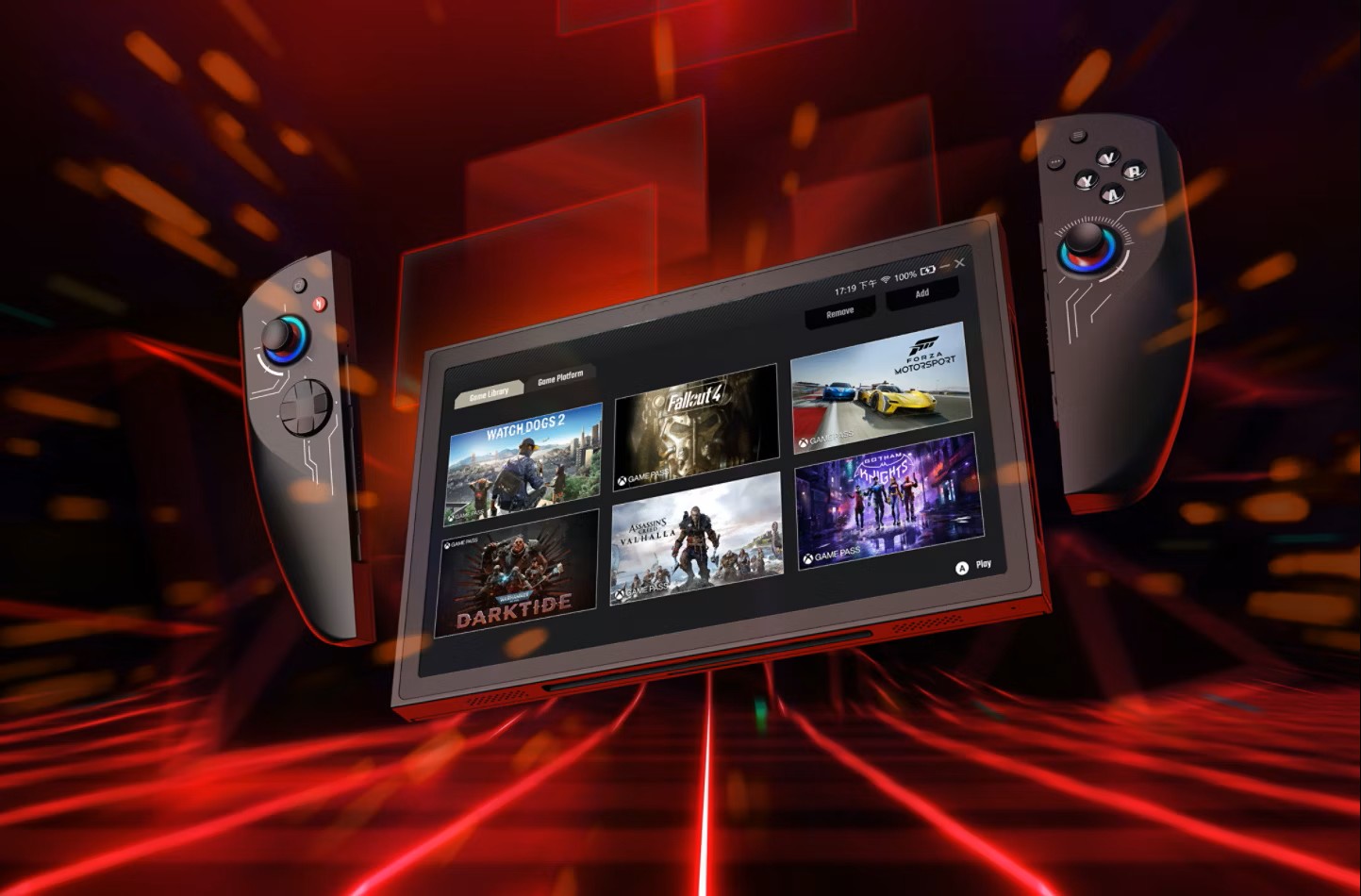
Acer's Nitro Blaze 11, which takes the "portable" out of "portable handheld gaming PC." Credit: Acer
Clones of Valve's handheld Steam Deck gaming PC have become a product category unto themselves, and companies like Asus and Lenovo are already a couple of generations deep into their own versions. One of Lenovo's is the first non-Steam Deck to officially run Steam OS, a sign that Valve could once again be ready to make a move against Windows.
And when the PC companies see what they think of as a new market opportunity, the race for differentiation begins, with occasionally silly results.
Enter the Acer Nitro Blaze 11, which looks like a mostly conventional handheld with Nintendo Switch-style detachable controllers but with a huge 11-inch screen (the OLED Steam Deck is 7.4 inches, and other Deck-alikes mostly land between seven and nine inches). At 2.3 pounds, the Blaze 11 pushes the boundaries of what can reasonably be considered "handheld." It also has a Switch-style kickstand for propping it up on a desk or table, which feels like an admission that you might not want to be holding the thing all the time.
All of that said, "take a thing people already like and make it bigger/smaller" has been a fairly reliable path to success in PCs, phones, and other tech over the last couple of decades. Maybe an 11-inch "handheld" won't seem so weird a few years from now.
A “keyboard for writers”
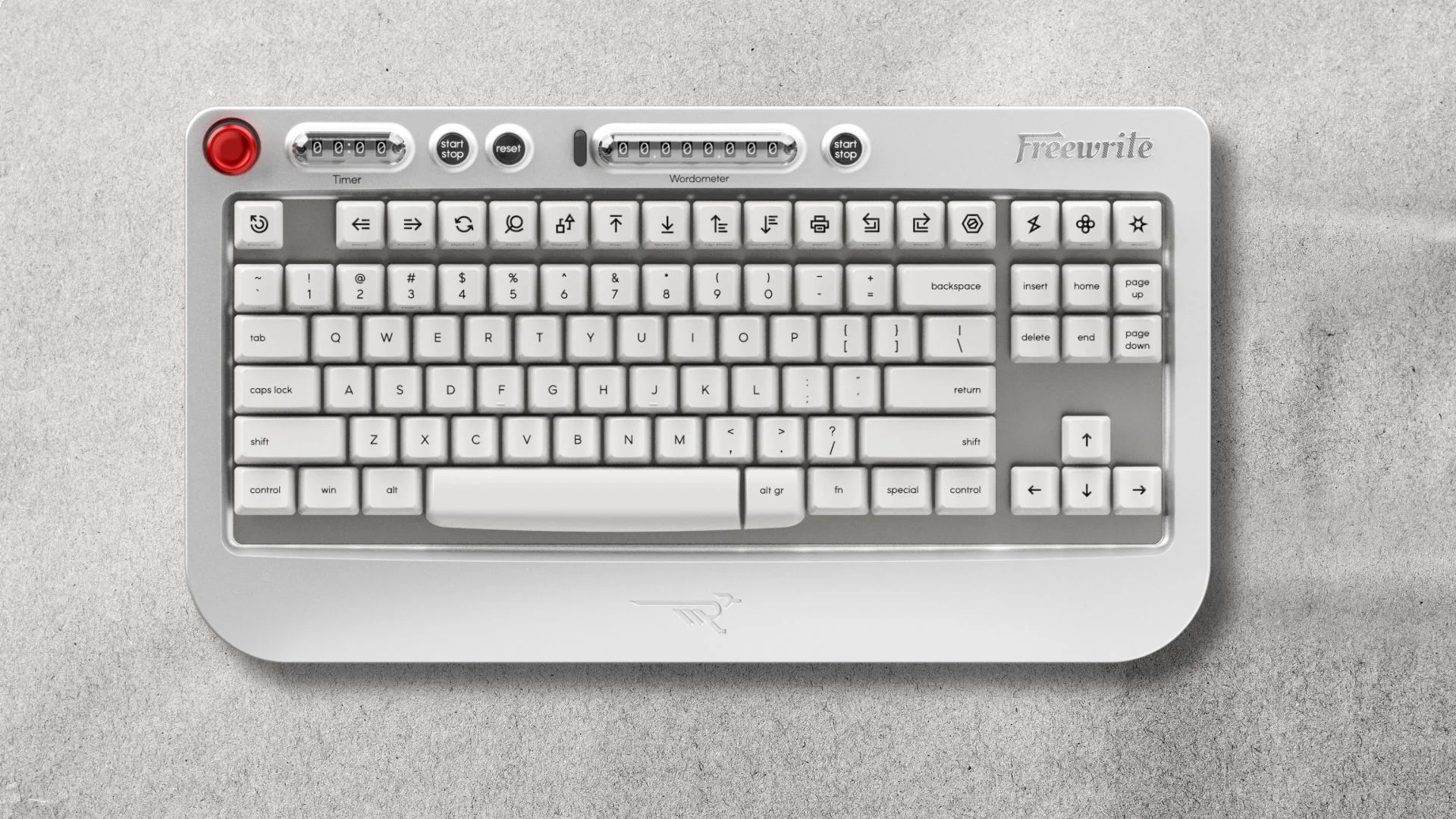
The Wordrunner is "the first mechanical keyboard for writers," or at least it will be if its Kickstarter takes off. Credit: Freewrite
This one's for all the writers out there who believe that they're just one equipment purchase away from having a perfect, productive, distraction-free writing setup.
Freewrite is known primarily for its smart typewriters, keyboards that are attached to small monochrome LCD or E-Ink displays that promise to be "dedicated drafting tools" that "maximize your productivity.
This year, they've unveiled a PC keyboard billed as "the first mechanical keyboard designed for writers." The Wordrunner has a function row of shortcut keys that will be useful to writers navigating their way through a document, plus a built-in timer and word counter for the times when you just need to pull words out of your brain and you can go back and edit them into cohesive thoughts later.
I do enjoy a keyboard with extraneous knobs and doodads, which makes the mechanical "wordometer" particularly appealing to me. Unfortunately, as of this writing the Wordrunner is still in a primordial, pre-Kickstarter state of development. If you're interested, you can put down $1 now, so you can get early bird Kickstarter pricing in February, and you might get a keyboard at some point several months or years in the future. Freewrite is, at least, an established company with several products under its belt, so we wouldn't be too worried about this project vanishing without a trace as so many Kickstarter efforts do.
Andrew is a Senior Technology Reporter at Ars Technica, with a focus on consumer tech including computer hardware and in-depth reviews of operating systems like Windows and macOS. Andrew lives in Philadelphia and co-hosts a weekly book podcast called Overdue.




/cdn.vox-cdn.com/uploads/chorus_asset/file/25837404/IMG_6678.jpg)





 English (US) ·
English (US) ·